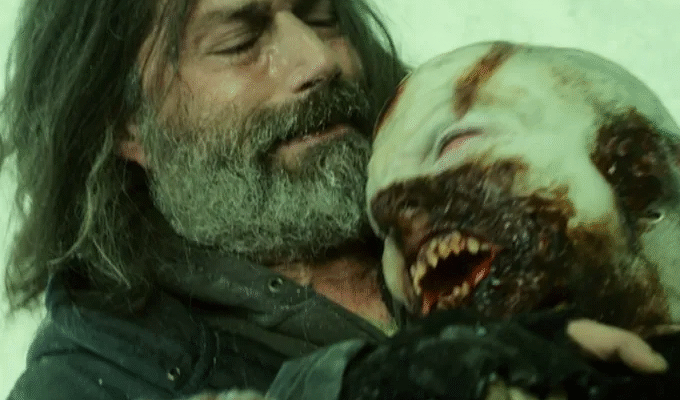Few post-apocalyptic horror films lean as heavily into atmosphere and emotion as Extinction (2015). Directed by Miguel Ángel Vivas, the movie blends chilling suspense with raw human drama, crafting a survival tale that is as much about inner scars as it is about external threats.
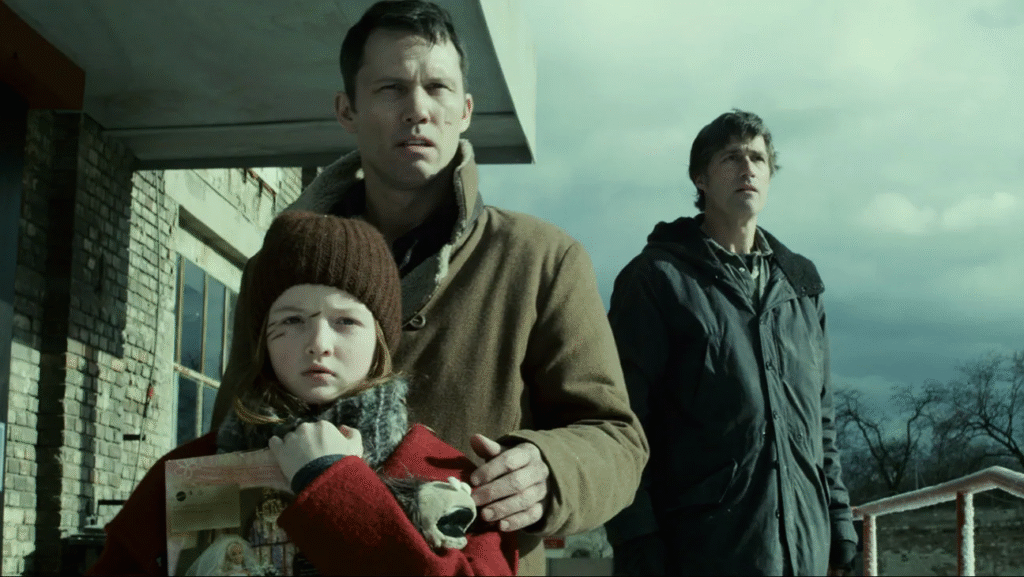
The film takes place years after a viral outbreak has reduced humanity to fragments. The world is now an icy wasteland, its silence broken only by the haunting reminder of what once thrived. Into this frozen setting, we meet Patrick (Matthew Fox) and Jack (Jeffrey Donovan), two men tied together by tragedy yet divided by bitterness. Their relationship is fractured, marked by grief, guilt, and betrayal.
At the heart of their uneasy coexistence is Lu (Quinn McColgan), Jack’s daughter. Her innocence contrasts with the grim world around her, and she becomes the glue—however fragile—that keeps the men tethered to one another. The trio attempts to preserve some semblance of normality in a snowbound ghost town, though the shadows of the past weigh heavily.
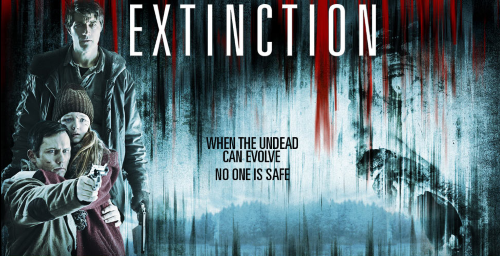
The performances are striking. Fox delivers Patrick with hardened resolve but lingering torment, while Donovan’s Jack simmers with quiet pain and regret. Their dynamic is tense and layered, giving the narrative emotional weight beyond the horror. McColgan, meanwhile, grounds the story with youthful resilience, embodying both vulnerability and hope.
The atmosphere is oppressive in the best sense. Snow and silence cloak the world, turning landscapes into a desolate canvas of dread. The cinematography thrives on stillness, making even quiet moments feel loaded with unease. The frozen wasteland isn’t just a backdrop—it mirrors the characters’ fractured spirits and emotional isolation.
When the infected do reappear, they’re more terrifying than before. Mutated, faster, and deadlier, these predators cut through the stillness with shocking ferocity. Their resurgence jolts the story from tense human drama into relentless horror, testing the survivors’ ability to fight back while also forcing them to confront truths long buried.
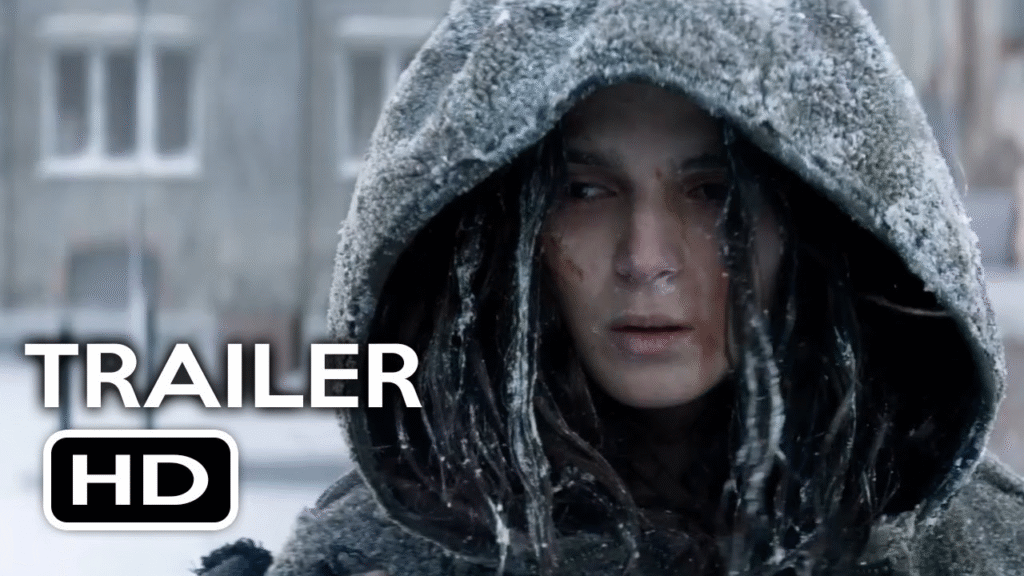
Thematically, Extinction is less about the monsters and more about the people trying to outlast them. The film grapples with forgiveness, guilt, and redemption—asking whether fractured families can heal even in the most hopeless conditions. It’s a survival tale that puts emotional wounds on equal footing with physical danger.
The pacing alternates between slow-burn tension and explosive bursts of violence. Some may find the stillness overly drawn out, but the deliberate rhythm amplifies the shocks when they come. By allowing room for the characters’ pain and conflict to breathe, the horror feels both more intimate and more devastating.
The film’s greatest strength is its refusal to offer easy answers. Patrick and Jack’s struggles aren’t neatly resolved, and survival feels fragile rather than triumphant. This ambiguity makes the story resonate, lingering in the mind long after the final scene fades.
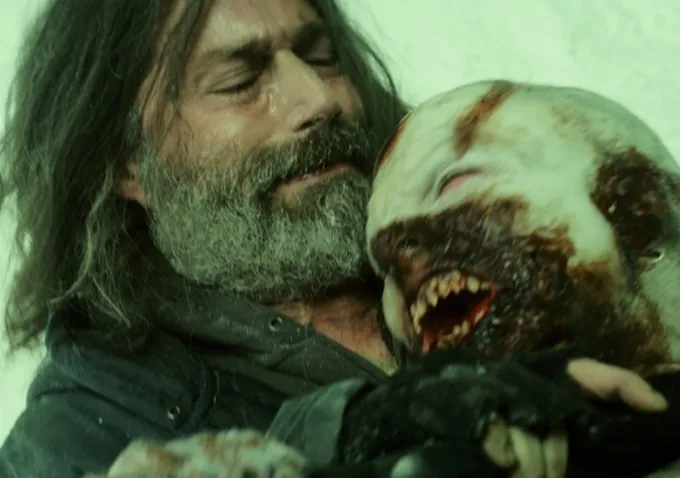
The score complements the bleak visuals, using sparse instrumentation to emphasize silence and sudden crescendos to punctuate terror. It works hand in hand with the setting to create a world where dread is constant, whether or not the monsters are on screen.
With a solid 7.4/10 rating, Extinction (2015) may not be the flashiest entry in the post-apocalyptic genre, but it stands out for its atmosphere, emotional depth, and willingness to confront humanity’s darker truths. Bleak, haunting, and quietly moving, it’s a film that proves horror can be as much about the heart as about the monsters in the dark.
